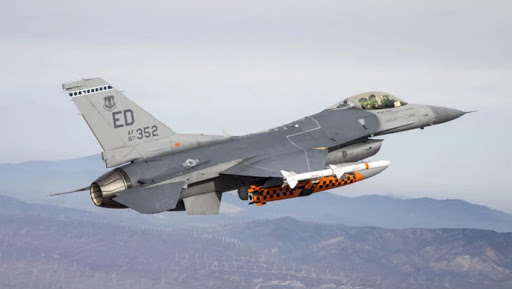Kurt Neubauer, business development lead for Raytheon Air Warfare Systems, has said the company expects a new flight test of its Joint Strike Missile (JSM) on F-35As to happen this year, which will provide an insight for future Australian integration.
In a conversation with Breaking Defense, Neubauer said the flight test will build upon the successful 2018 JSM flight test of a live warhead with a second, live-warhead demonstration later this year. Norwegian firm Kongsberg Defence & Aerospace has also completed internal weapons bay suspension and fitting tests of the JSM on the F-35A and C aircraft variants.
In addition, fit checks have been completed on all F-35 variant external wing stations, as well as the US Navy and Royal Australian Air Force’s F/A-18E/F Super Hornets.
In previous tests, a Norwegian F-16 successfully launched the JSM in 2018, with an approximate stand-off range of more than 150 nautical miles. Norway and Japan are confirmed as the first customers for the new missile, with Japan also selecting the missile for the Japan Self-Defense Force's joint strike fighters.
The JSM can be launched against targets on land, at sea, and in littoral environments to conduct suppression/destruction of enemy air defences along with offensive anti-surface warfare.
Neubauer described the missile as "a fifth-generation weapon for fifth-generation aircraft". He also advised that Raytheon expects the Norwegian Air Force to declare initial operational capability on the F-35As in 2023.
Neubauer advised that one of the new features of the missile is its IR seeker.
“JSM’s seeker is cooled, scans a wide field of view, uses multi-banded imaging infrared, and can track a large number of contacts simultaneously. It rejects decoys and can complete autonomous target identification for both ship and land targets,” he said.
“JSM is capable of tailoring en-route ingress and attack courses to enhance its survivability,” he elaborated. The TacNet link further “allows for inflight updates and route adjustments.” JSM’s survivability is enhanced through mission planning, both on the ground and when mated to the aircraft.
Australia has expressed interest in acquiring the JSM to support the long-range strike capabilities of the RAAF since the retirement of the F-111. As part of this, Australia, in collaboration with Norway, signed on to help finance and develop an air launched variant of the Kongsberg Naval Strike Missile (NSM).
The JSM is a fifth-generation platform providing the F-35 with a long-range anti-ship and land attack capability. The JSM is designed with a stand-off range to protect the launch platform from being detected and engaged by enemy air defence systems.
The JSM platform's high survivability is accomplished by:
- Passive sensors;
- Low-observability signature;
- Sea skimming altitude;
- Terrain following flight;
- High agility with selectable end-game flight profiles; and
- Precise designated time-on-target information.
As part of BAE Systems Australia's central role in supporting systems integration in the F-35 program, Kongsberg and BAE have partnered to support the future integration of the JSM into Australia's F-35s.
There has also been strong interest in introducing the JSM into maritime patrol aircraft (MPAs) like Boeing P-8A Poseidon for internal weapons bay carriage as well as on the wing stations. An acquisition of the F-35 along with the JSM, will strengthen any nation’s threshold, and serve wider coalition interests.
The JSM is designed for precision anti-surface warfare missions with emphasis on penetration of highly defended sea or land targets through a combination of stealth, onboard intelligence and endgame kinematics.
This is achieved by the synthesis of low signature, advanced engagement planning, precision navigation, an ultra-low wave adaptive sea-skimming flight profile, the use of high-resolution passive dual imaging infrared (IIR) seeker, salvo compression by near-simultaneous programmable time on target, and exceptional agility in the terminal phase.
The low-observable JSM can engage targets at sea or on land at ranges greater than 300 nautical miles and with proven autonomous target recognition (ATR), and aim point selection support precision attack against highly defended targets.
The dual Imaging Infrared seeker gives the missile all-weather capability and the IR seeker has been thoroughly tested against all known NATO IR decoys through more than 3,000 hours of flight-testing.
The JSM system is under consideration by the ADF to fulfil the Project JP3023 naval strike weapon for the RAAF’s F-35A, due to enter service from 2018. The naval strike capability is expected to be fielded under the follow-on Block 4 capability upgrade, due to be incorporated into the RAAF’s fleet from around 2023.
JSM is an evolution of the NSM, which was originally developed for the Norwegian Navy. NSM is a long-range, precision strike weapon that seeks and destroys enemy ships at distances greater than 100 nautical miles.


